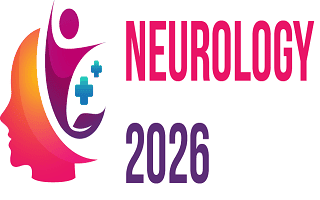4th International Conference on
Neurology & Neurological Disorders
October 15-16, 2026 | Paris, France

Neurology 2026

National hospital of Sri Lanka, India
Abstract:
A 65-year-old woman presented with a one-and-a-half-year history of persistent and severe neck pain, initially attributed to musculoskeletal causes. Over the following year, she developed progressive unsteadiness, urinary incontinence, voice changes, and unusual nocturnal vocalizations. Neurological examination revealed anterocollis, dysarthria, and bilateral cerebellar signs, including severe gait and limb ataxia, gaze-evoked nystagmus, and dysdiadochokinesia. Her facial expression was masked, and although no resting tremor was observed, she had marked limb rigidity. There were no cranial nerve palsies or limb weakness. A significant postural drop in blood pressure indicated autonomic dysfunction. Cognitive assessment using the Mini-Mental State Examination (MMSE) yielded a score of 29/30, suggesting preserved cognition. Magnetic Resonance Imaging (MRI) of the brain demonstrated the classic “hot cross bun” sign in the pons, a radiological hallmark of Multiple System Atrophy of the cerebellar type (MSA-C). MSA-C is a progressive neurodegenerative disorder characterized by cerebellar ataxia, autonomic failure, and variably expressed parkinsonian features. While ataxia and autonomic dysfunction are common early symptoms, initial presentation with severe neck pain—likely due to axial dystonia and anterocollis—is an increasingly recognized but atypical manifestation. This case underscores the importance of considering neurodegenerative etiologies in older adults presenting with chronic neck pain, particularly when accompanied by cerebellar and autonomic signs. Recognition of hallmark clinical and radiological features, such as the hot cross bun sign, can aid in the early diagnosis of MSA-C, facilitating timely symptomatic management and appropriate multidisciplinary care for this debilitating condition.
Biography:
Pavithira Sathiyaseelan is a Senior Registrar in Neurology currently working at the National Hospital of Sri Lanka (NHSL). She has obtained her MBBS in 2017 and completed her MD Neurology in 2024. With several years of clinical experience and a strong commitment to patient care, she dedicated to advancing the field of neurology through evidence-based practice, ongoing learning, and academic collaboration.
